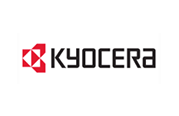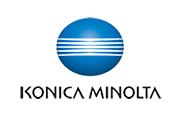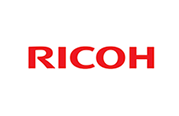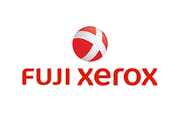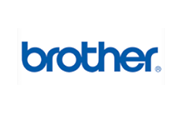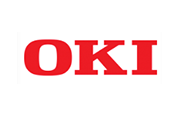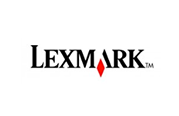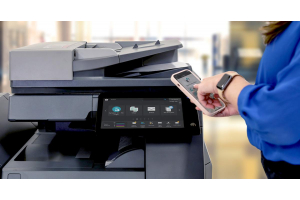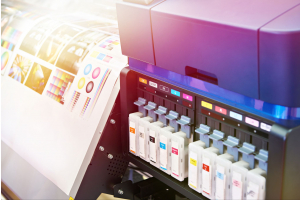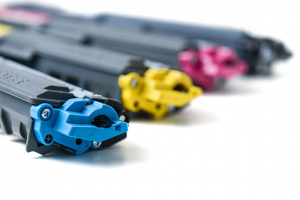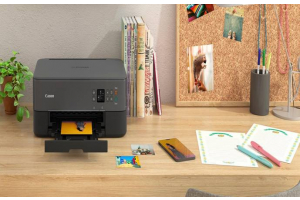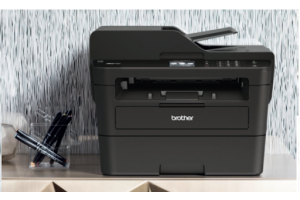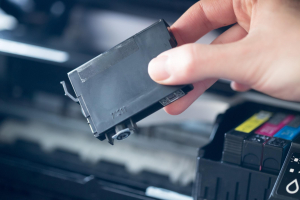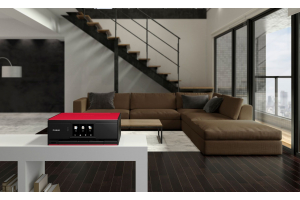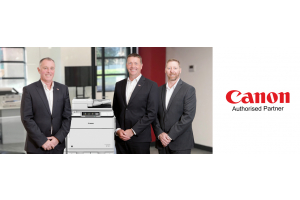
When to Choose Ink or Toner for Printing

Inks and toners are both widely used across numerous industries; if you’ve worked in any office environment, you have at some point very likely been within A4’s distance of a stalled printer calling for new ink or new toner. But while inks and toners are often said in the same breath, they are far from interchangeable; they differ in their composition, and the type of printers they are designed for, and understanding the difference between the two is essential for any business that is intending to do their printing on a professional level. Furthermore, the key differences between ink and toner cartridges can directly impact the ongoing expenses of operating the printer, so knowing the difference between the two is strongly recommended to any business owner that’s trying to avoid extraneous spending.
Difference between Ink and Toner
INK
Key Features:
- - Liquid
- - Optimal for use in inkjet printers
- - Superior quality photo reproduction
Typically speaking, ink is the liquid substance primarily composed of pigments or dyes suspended in a solvent; it is commonly used in inkjet printers, which create images by spraying tiny droplets of ink onto the printing surface. Inkjet printers are suitable for printing high-quality images and graphics. The ink is absorbed by the paper, resulting in vibrant colours and smooth gradients. Ink cartridges for inkjet printers are generally available in various colours and can be replaced individually when a particular colour runs out. They are also known for being more affordable compared to toner cartridges.
TONER
Key Features:
- - Dry Powder
- - Optimal for use in laser printers
- - Quicker print speed
Conversely, Toner is the fine powder composed of tiny particles, typically made of plastic, pigment, and other additives. It is used in laser printers and photocopiers, which are known for using a different printing process; to create their printed images, laser printers use heat and static electricity to fuse the toner particles onto the paper. Laser printers are known for their fast printing speed and high-volume capabilities, making them popular in office environments. Toner cartridges for laser printers generally contain black toner, but colour laser printers will often feature separate toner cartridges for each colour.
Know more about - What are Genuine Ink & Toner Cartridges?
INK VS. TONER: PROS & CONS
The choice between toner and inkjet cartridges will always come down to your specific printing needs; as with most things, the most enduring factors are speed, quality, and cost, but there are some other nuances to consider too…
Inkjet Cartridges Pros:
- Quality/Smudging: Inkjet printers excel at producing high-quality images and graphics with vibrant colours. However, the printed output can be susceptible to smudging if not allowed to dry properly.
- Versatility: Inkjet printers can handle a variety of media types, such as other paper stocks (including photo paper) as well as non-paper materials such as fabric.
- Short-term Cost: Inkjet cartridges tend to be more affordable upfront compared to toner cartridges, as they have a lower start-up cost.
- Energy Efficiency: Inkjet printers generally consume less power during operation compared to laser printers. This energy efficiency can result in lower electricity costs over time.
- Noise Level: Inkjet printers tend to operate quieter than laser printers. This makes them suitable for environments where noise reduction is important, such as home offices or shared workspaces.
- Colour Accuracy: Inkjet printers offer better colour accuracy and are preferred for printing high-quality photos and graphics.
Toner Cartridges Pros:
- Quality/Smudging: Laser printers produce sharp and precise text documents, with no risk of smudging since the toner is fused onto the paper using heat.
- Speed: Laser printers equipped with toner cartridges are known for their fast printing speed, making them suitable for high-volume printing environments.
- Long-term Cost: Toner cartridges generally have a higher upfront cost compared to inkjet cartridges; but, on average, toner printers have a lower cost-per-page ratio, which will save you money in the long run.
- Print Volume: Toner cartridges are generally better suited for high-volume printing needs.
- Durability: Toner prints are resistant to fading and moisture, making them more durable and long-lasting than inkjet prints.
- Maintenance & Longevity: Inkjet printers may require more frequent cleaning and maintenance to ensure optimal performance, while laser printers with toner cartridges generally require less maintenance (and less ink spills). Similarly, Toner cartridges have a longer shelf life compared to inkjet cartridges, as they contain dry powder that doesn't dry out like liquid ink.
Cost Per Page
Ink cartridges generally have a higher cost per page compared to toner cartridges. The limited page yield of ink cartridges means they need to be replaced more frequently, increasing the overall cost of printing.
Toner cartridges tend to have a lower cost per page compared to ink cartridges. They offer higher page yields, allowing for more prints before requiring replacement, resulting in lower overall printing costs
As a general comparison, inkjet printers typically average around 20 cents per page, while laser printers average around 6 cents per page. Taking into consideration the average printing habits of most employees - approximately 40 pages per day on average - it can be (very broadly) summarised thusly:
Inkjet: Approximately $2,000 per employee
Laser: Approximately $600 per employee
Ways for Reducing Office Printing Costs

Image Courtesy - Brother
You can contribute to reducing office printing costs by implementing simple yet effective practices in your daily routines.
- Remember to review print orders before pressing 'print' to avoid unnecessary prints.
- Optimise paper usage by printing double-sided or fitting two pages on a single sheet.
- Utilise economical fonts and prioritise black and white printing whenever possible.
- Only print only when necessary, minimising wasteful printing.
Which is better for the environment?
The environmental impact of printing depends on multiple factors, including printer usage, paper consumption, and proper recycling practices.
Energy Efficiency/Emissions: Laser printers generally consume more energy during operation compared to inkjet printers. Inkjet printers tend to have lower power requirements, making them more energy-efficient and environmentally friendly. Laser printers also generate more heat during the printing process, which can contribute to increased energy consumption and emissions. Inkjet printers produce less heat and typically have lower emissions.
Refill Options: Inkjet printers often have more readily available refill options, including refill kits and third-party ink cartridges. This can help reduce waste by allowing cartridges to be refilled instead of discarded. Toner cartridges, on the other hand, may have limited refill options.
Recycling Programs: Both inkjet and toner cartridges can be recycled through specialised recycling programs. Many manufacturers offer cartridge recycling initiatives, reducing the environmental impact of cartridge disposal.
Paper Consumption: Both printer types have the potential to contribute to paper waste, which you can help mitigate by printing only what you need to and then responsibly recycling printouts that are no longer needed.
Inkjet vs Laser printers: Tips on Choosing the Printer that Suits You Best
Choosing a printer that suits your needs requires careful consideration of various factors. Here are some tips to help you decide between inkjet and laser printers…
Compactability/Maneuverability: Inkjet printers offer a compact design. Unlike laser printers, they don't require internal drums and rollers, allowing for full-page printing in a smaller footprint. Many inkjet printers also provide scanning and copying capabilities.
Affordability: Inkjet printers are more affordable to purchase. However, it's important to consider that ink costs can make these budget inkjet printers more expensive to operate in the long run.
Quality: Laser printers excel in text and document printing. For extensive document printing, even monochrome laser printers can produce high-quality pages more efficiently than inkjet printers. However, inkjets are better suited for printing photographs.
You can check out our extensive range of inks and toners here. Have more questions? Don’t be afraid to contact us here!
- Top Quality Inks and Toners at the Best Prices
- $10 for Vic, $35 for anywhere else in AUS
- Order Online 24/7
- Real People, Real Service!
